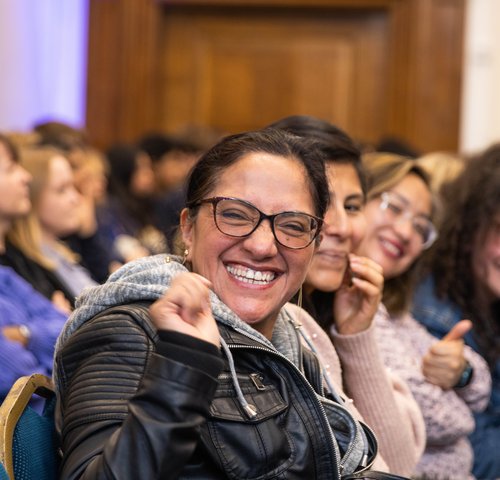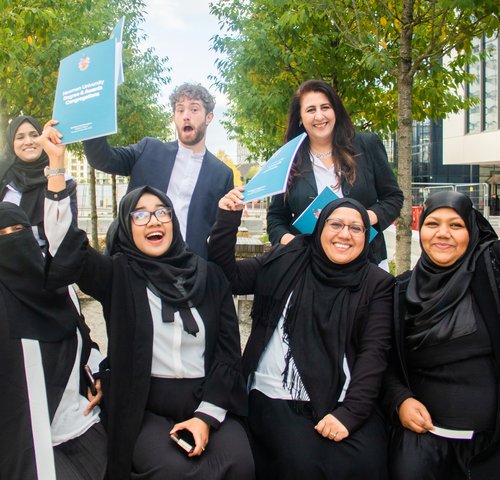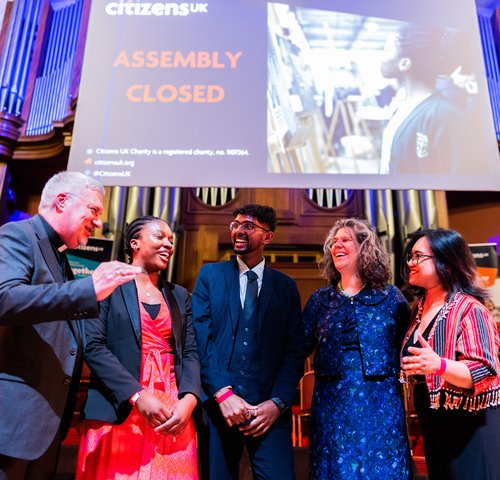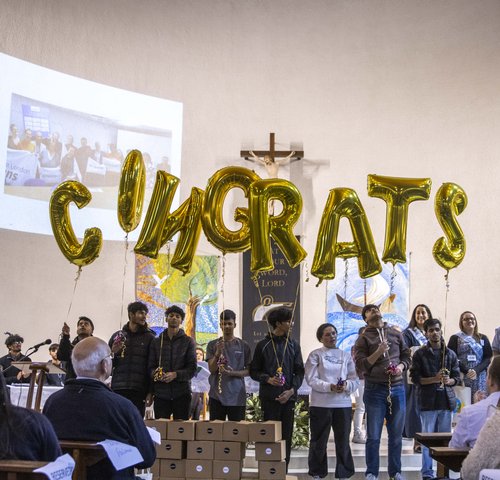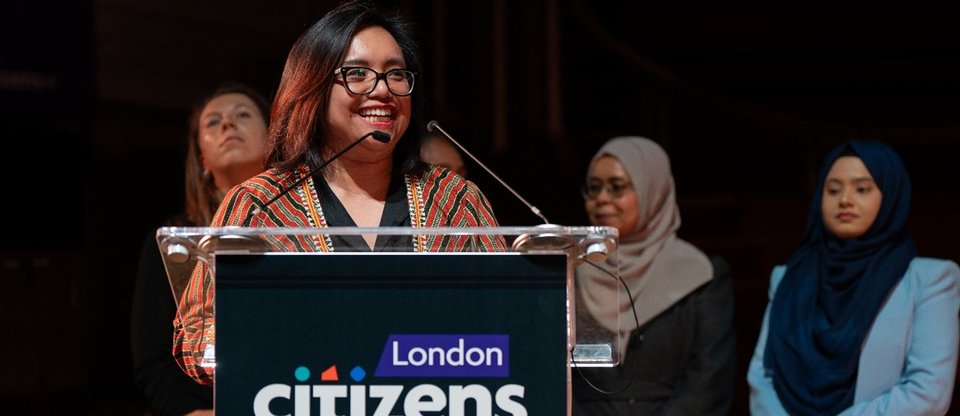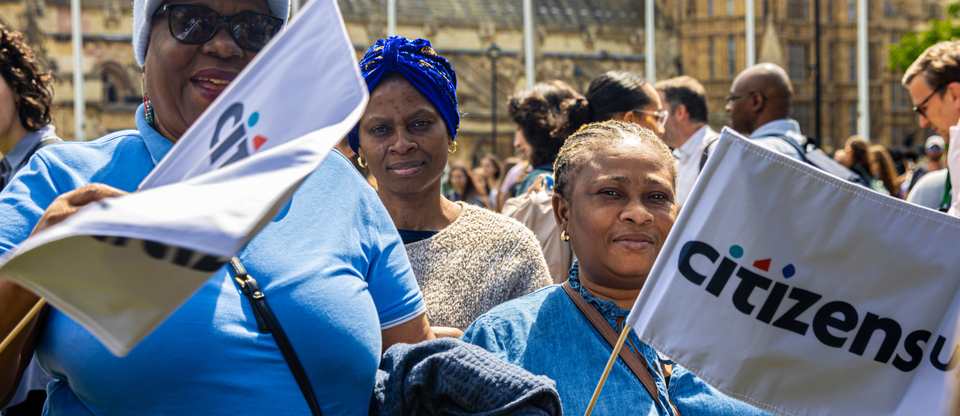A Deep-Dive into South London Listens
A Deep-Dive Into South London Listens
By Pete Brierley, Assistant Director at Citizens UK and Lead Organiser of London Citizens
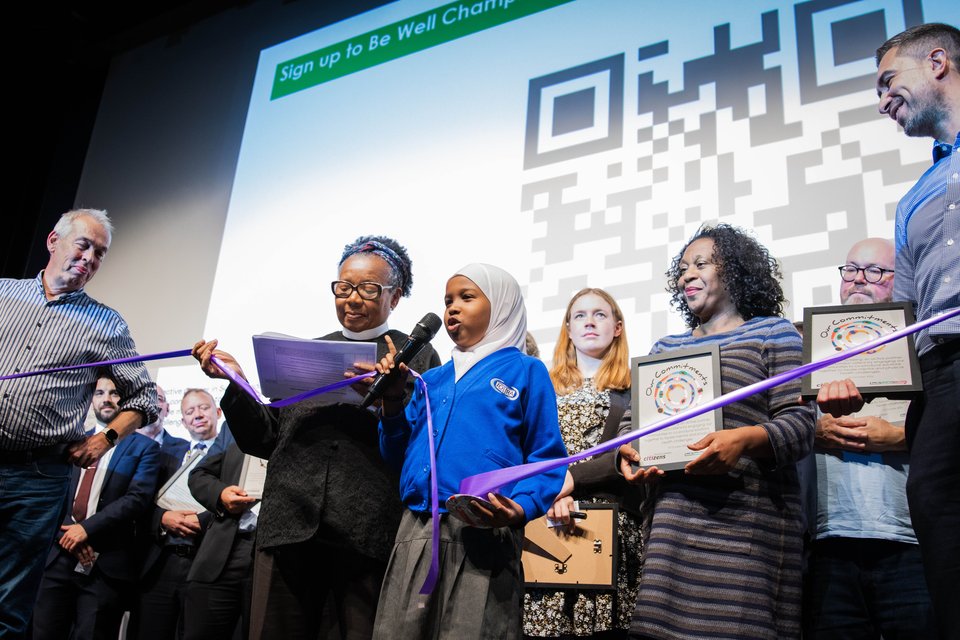
During the pandemic, the impact of inequality across London became glaringly evident. Whilst some people who were furloughed were fortunate enough to use the time to brush up on their gardening skills or learn a new language, for others, the reality of overcrowded housing, lack of access to green space, and no option to be furloughed was punishing.
The South London Listens (SLL) campaign emerged as a response to this inequality. While many of us working in communities across South London were already aware of the disparity, the pandemic made decision-makers see it through a new lens. The story of South London Listens is one of NHS leaders taking bold action and genuinely listening to communities, and of community leaders responding not with complaints, but with courage, conviction, and creativity.
A summit was the starting point...
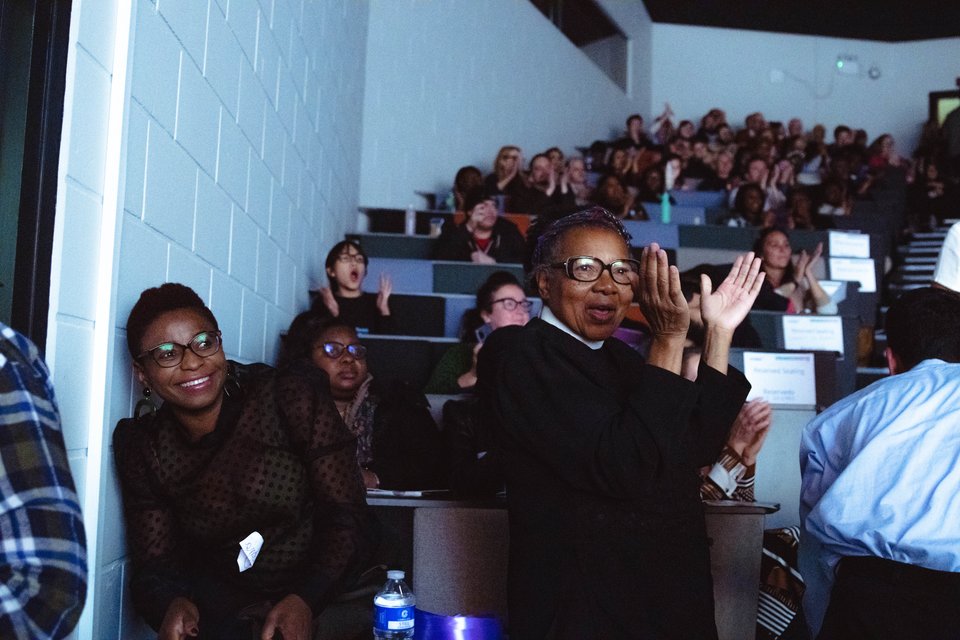
The story of SLL begins with a summit hosted by the NHS, led by prominent figures across health and local authorities, including Dr. Vin Diwakar, Medical Director for Transformation; Sir Norman Lamb, Chair of South London and Maudsley (SLaM); Vanessa Ford, Chief Executive of South West London and St George’s Mental Health NHS Trust (SWLSTG); and many others.
“Why not let us take charge of the next summit? We may not have letters after our names, but we know what’s needed.” - Beverley Wong, a parent activist and now a colleague from Lambeth
I was asked to bring community leaders to share what living through the pandemic was really like for those struggling. After the first summit, Beverley Wong, a parent activist and now a colleague from Lambeth, suggested to the NHS, “Why not let us take charge of the next summit? We may not have letters after our names, but we know what’s needed.”
While NHS leaders, local councillors, and people from the charitable sector had compiled a list of six priorities, members of South London Citizens - a coalition of 100 civic organisations across South London, wanted to develop and share their own priorities. It would have been easy to adopt the priorities selected by local authority leaders and the NHS, but if we had not pushed back, we would not have gained any buy-in or ownership from community leaders, who are the ones with first-hand experience of issues facing their community.
So, how were we going to ensure their voices were heard and accounted for in these decisions?
As with all community organising, we started with people rather than data. Although data is important, you need to look beyond it to understand people’s feelings, aspirations, and pain. Data alone results in numbers without human stories and lacks the fuel needed to inspire community leaders to drive the change you want to see. Without real stories, you also miss the anger that complex issues require to move bureaucratic machinery and poke decision-makers to take action. As Dan and Chip Heath write in their excellent book, Switch:
“Trying to fight inertia and indifference with analytical arguments is like tossing a fire extinguisher to someone who’s drowning. The solution doesn’t match the problem.”
We bring people together to win change. This means building community-led solutions to big and small problems, that work for everyone.
Launching a listening campaign...

In the autumn of 2020, just after Prime Minister Boris Johnson announced a second lockdown, we sent out a call to community leaders from across our membership—leaders in faith organisations, schools, and universities who responded eagerly, wanting to be involved.
At a time when people felt powerless, community organising offered them the opportunity to be part of something meaningful. We hosted six online training sessions on how to listen effectively, and decided the initiative should be called South London Listens. Crucially, we emphasised how listening would lead to action.
The more people you involve, the more power you have to achieve the change you seek. This was proven in the fact that those 100 leaders alone listened to over 6,000 people!
"When you go to a community with questionnaires and sheets of paper, they are often filled out and handed back to someone in the system who is expected to figure out the answers to the problems written down. This time, we were asking people to share with each other what they had found and to discuss together what could be done. It wasn’t enough to simply ask the NHS to solve all the problems we identified; communities had a role to play." - Pete Brierley, Lead Organiser of London Citizens
While there were key figures at the heart of this initiative—Sir Norman Lamb and South East Integrated Care System (ICS) CEO Andrew Bland, who led the charge; Ann Beasley, the ever-optimistic Chair of SWLSTG; Mike Bell, Chair of South West ICS; David Bradley, CEO of SLaM; Bishop Rosemarie Mallett; and the endlessly helpful Martin Wilkinson, who got the work done and even attended the listening training—there was also pushback from others in the system who saw this work as an unnecessary consultation. We had to explain that this wasn’t a consultation; it was about building a movement of people to act together to make change.
When you go to a community with questionnaires and sheets of paper, they are often filled out and handed back to someone in the system who is expected to figure out the answers to the problems written down. This time, we were asking people to share with each other what they had found and to discuss together what could be done. It wasn’t enough to simply ask the NHS to solve all the problems we identified; communities had a role to play.

Listening also helps you discover new leaders—people oriented toward action and change, people impacted by the issue who can provide insight and inspiration into a way forward. We found these individuals as we ran our listening campaign. Leaders like Jo Ray, a mother whose child was on the child and adolescent mental health services (CAMHS) and who wanted to do more in her school to support young people; Pastor Steve Lawrence, a leader in a Black majority church in Lewisham, who was angry about the fact that it was often people from Black communities who bore the brunt of inequality in South London; and Kely Jiminez, a single mother and cleaner on low pay who had to work through the pandemic but struggled with her mental health due to the pressure of working multiple jobs at minimum wage.
Co-production done differently...
We brought these leaders together and had them lead sessions with health practitioners and local councillors to think about how we might tackle some of the challenges they each faced. Our goal was not just to empower those impacted by the issues but to strengthen each team so that they included people with budgets, ideas, and the responsibility to help make change. Colleagues in the NHS referred to this process as co-production.
In community organising, we have a tradition of conducting issues workshops. In these sessions, the community holds more power—they discuss the problems they face, and we work to drill down into the specifics of the issue and identify changes that could make a difference.
Rev. Youngblood, from our sister organization in the IAF (Industrial Areas Foundation) in the US, describes an issue in the following way: “An issue is immediate, specific, something we can point to, identify, grasp (as opposed to problems, which are vast, general, unending). We get to an issue by asking practical questions and by disciplining ourselves to search for answers—questions like who? What? Where? And when?”
The test of a good issue and its solution lies in the response to two key questions:
- Is it worthwhile?
- Is it winnable?
We believe that community leaders are made, not born– which is why we invest so much time and effort into leadership development and training with a focus on putting the theory and skills into practice.
By worthwhile, we mean: does the issue resonate with enough people that it is worth spending resources, time, and energy to solve it? By winnable, we mean: is there a practical solution where we know the person who could make it happen, and do we have the power to effect some change?
Samantha Power (Administrator for the US Agency for International Development) put it well when she said:
“Shrink the change… even when you can't come up with a big solution, there may well be something, however modest, you can do. Throughout history, the big solutions usually come through incremental change.”
A good example of this process unfolding was Jo’s frustration with the CAMHS waiting list. Many leaders shared the same story: “I have been waiting for over a year, and I have no idea what to do while I am waiting or how long I am going to have to wait.” Of course, initially, everyone wanted to reduce the waiting times, but we knew that SLaM, SWLSTG, and Oxleas NHS Trust wanted the same thing. Without additional resources in an underfunded part of the NHS, could we realistically expect to make significant progress?
Instead, we began to ask what specifically about the waiting was frustrating. “You have no idea where you are on the list,” said one parent. “What are you supposed to do while you wait?” said another. This gave us the insight we needed. Rather than trying to reduce waiting times, why not make the wait easier by letting people know where they are on the list and developing a virtual waiting room where they can download resources, watch videos about the process, and learn what to expect? The wait then becomes more about preparation than anxiety-induced waiting.
Now that we understood the problem, what kind of change did we make?
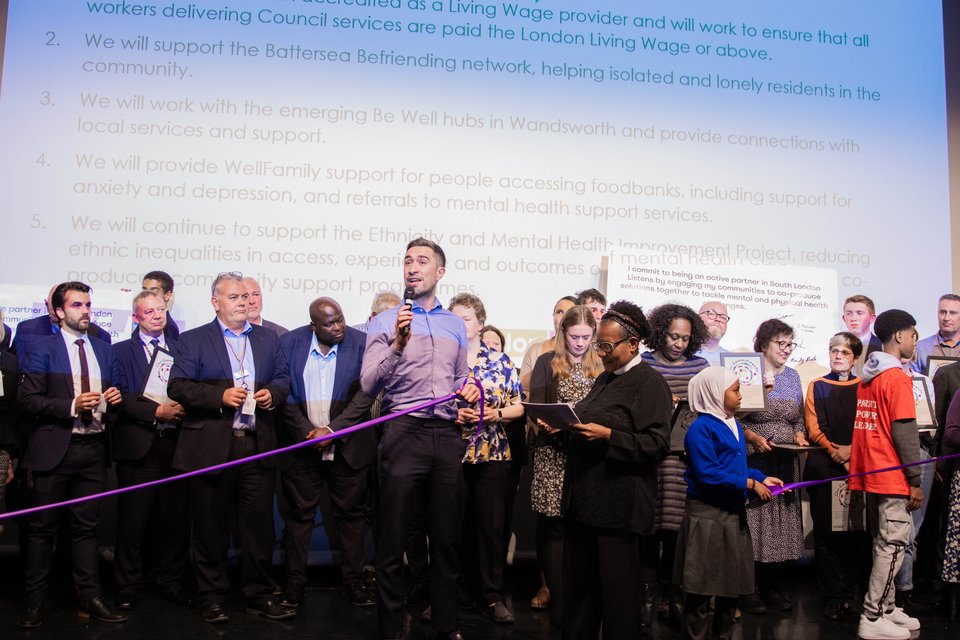
As our priorities emerged, we saw the value in bringing different parts of the system together, and we could see our interventions taking on different forms. Looking back now, I see that we had three distinct types of intervention:
This was something everyone talked about, but it often remained just words with little tangible action. Getting the NHS health system to pay a real Living Wage could transform this, giving NHS Trusts and organisations a tangible action they had the power to implement. It was amazing to see the system at its best. I particularly admired the way that leaders like David Bradley led the charge for organisations to pay the real Living Wage, using his relational power to write to other NHS leaders and allocate his own budget to ensure that SLaM paid the real Living Wage. This work has led to over 4,600 staff receiving a pay rise.
This type of change involved placing those impacted by issues at the heart of helping to find practical solutions to complex problems. It wasn’t always about fixing the big problem but rather about addressing some of the issues within often very complex challenges. Take the issue of access to services, for example. I had often heard local authorities, and some NHS staff refer to ethnically diverse leaders, the Latin American community, or even Muslim organisations in our community as ‘hard to reach,’ to which our leaders would reply, ‘It’s not us that are hard to reach… it’s you—the NHS.’
While we couldn’t solve the problem entirely, we believed that two very practical steps would help. The first was placing mental health practitioners into community organisations. These practitioners have been highly successful, helping people who might feel uncomfortable or lack confidence in accessing services to get the support they need right away.
The second was making GP practices more welcoming. Many of our migrant leaders felt scared to visit a GP, and some GPs were asking for identification before registering them. We worked with Doctors of the World on their Safe Surgery initiative. Since we started in 2021, working together with local authorities and the NHS, we have seen a 100 percent increase in surgeries signed up, with a total of 240 now registered. These practices now commit to welcoming migrants, not requiring identification upon arrival, and ensuring that language is not a barrier to signing up.
We wanted to unlock the potential of parents, teachers, priests and Imams to leverage the relationships they have in communities to tackle health and wellbeing. This is how the Be Well initiative was born. The aim was for members of South London Citizens to connect people to each other and to the right services. Leaders participated in Be Well champion training, where they learned how to be a mental health champion, how to navigate local services, and how to use community organising to drive change. We believe that by being well-connected, we ensure people don’t fall apart. We encourage each organisation to think about what it can do to support wellbeing and take action with the wider community on the structural and systemic inequalities and injustices that impact health and mental health Some Be Well organisations have started coffee mornings; Be Well schools have set up wellbeing spaces and developed peer-to-peer support programs.
The importance of accountability
I recently shared the story of South London Listens with some NHS leaders in an NHS leadership programme. "I’ve seen this all before," said one of the attendees; a new initiative generates some excitement, but then nothing comes of the commitments made because the NHS moves on to a new initiative or crisis. "I think it depends on two things," I replied. Firstly, who owns the initiative? If only NHS staff own the initiative, then yes, it’s easy to move on because nobody else is invested in it. But that wasn’t true for SLL; the people who had shared their pain or volunteered their time wanted to know whether the NHS had fulfilled the promises they made.
Two community organising lessons are important here: American civil rights activist, Heather Booth says, "90% of organising is follow-up." It’s easy to secure commitments, but following up on them isn’t always fun or easy. Suddenly, a commitment made by a Chief Executive of a Trust has to be operationalised. Perhaps the person in charge of that area doesn’t agree with the intervention or feels they have other priorities. In this case, we had some of those who would operationalise the work involved in the design of some of the programs, but we were also working with a very talented and incredibly committed NHS staff team led by the Director of Communications, Ranjeet Kaile. Ranjeet was, and is, tenacious, optimistic, and willing to take risks. He’s exactly the kind of leader the NHS needs if it is to renew, innovate, survive, and flourish. Ranjeet had seen the power of Citizens UK and knew what happened when politicians or decision-makers delivered for communities—and what happened when they didn’t.
On 10th October 2023, two years after we started the initiative, we held a gathering at King’s College London, where leaders asked decision-makers how far they had come with their commitments to change.
NHS colleagues were nervous that we weren’t publicising the event on social media and were concerned about how empty the 500-seat venue would look. The venue was standing room only. The atmosphere was electric. Leaders from South West and South East Integrated Care System (ICS), as well as the chairs of the ICSs and Chief Executives of the mental health trusts, appeared on stage, either with a story of implementation or a commitment to act. It’s this kind of accountability that led one of the ICS leaders to say, "I take this accountability even more seriously than other forms—it’s so real. I feel accountable to my community."
What's next?
Sustaining innovation is one of the hardest challenges. Often, people want to move on to the next fad or give up because partnerships and community organising require slow and patient work. I hope that what we have created together with our NHS colleagues through South London Listens is a set of strong relationships, tools, and a method of making change that can be applied to multiple issues across the health system. While it is crucial to follow up on previous commitments, community organising also recognises that to keep people involved, you must find new energy, bring more people into your movement, and continue the cycle of change.
5 steps to social change
Organise - Everyday people have the ability to win change
Listen - Your solutions form the roadmap to our campaigns
Plan - We train you through the tools of community organising
Act - We shift the balance of power
Negotiate - We bring together power-holders with civil society to hold them accountable and progress change
In organising, we have learnt to work cyclically: listening, acting, and then evaluating before starting the cycle again either tackling new issues or strengthening work that needs to be deepened. The cycle of action reminds me of Charles Handy’s concept of the Second Curve. This idea represents the need to initiate a new path or innovation before the current trajectory reaches its peak and begins to decline. Embracing this concept requires taking risks, making changes, and welcoming uncertainty. By applying the principles of the organising cycle, we can effectively initiate this new phase. In South London, as we move into another cycle of action our focus is on housing as a health issue. We have a long way to go, but I believe that with the strength of commitment from the NHS, the creativity of the local community, and the power of working together, we can make a dent in one of London’s greatest inequalities.
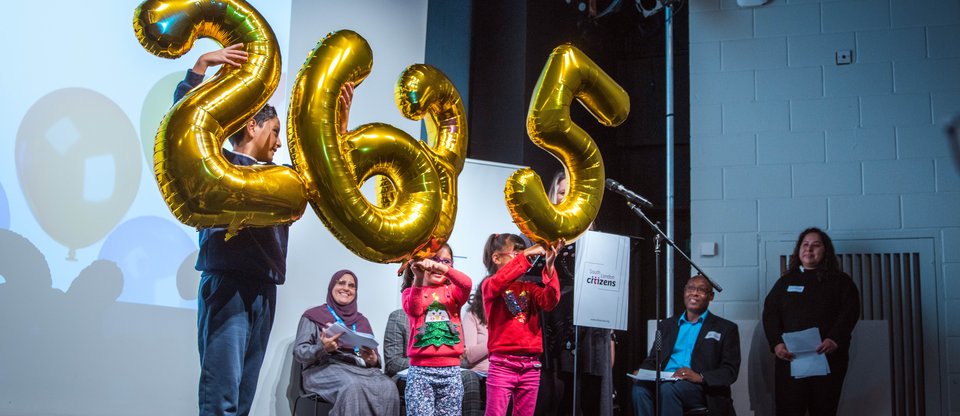
South London Citizens is the second oldest Citizens UK Chapter (after TELCO), and is formed of eight local alliances (Croydon, Greenwich, Lambeth, Lewisham, Merton, Peckham, Southwark, Wandsworth) building power for the common good south of the Thames.
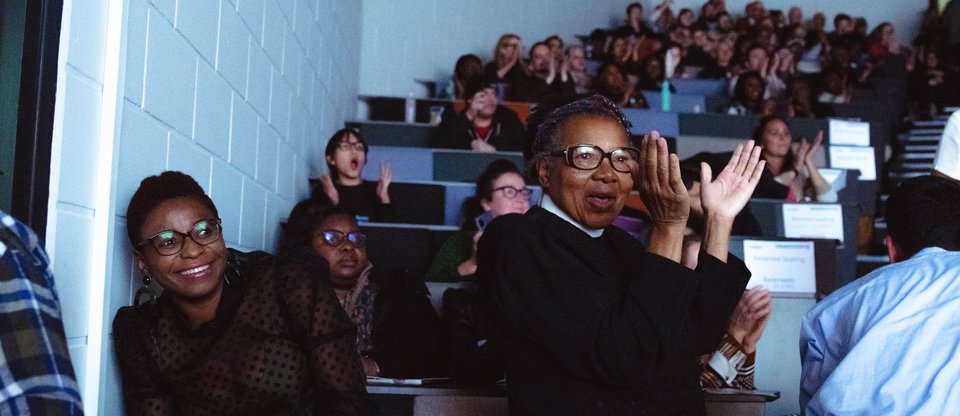
Read more about South London Listen's projects, latest news and wins.
